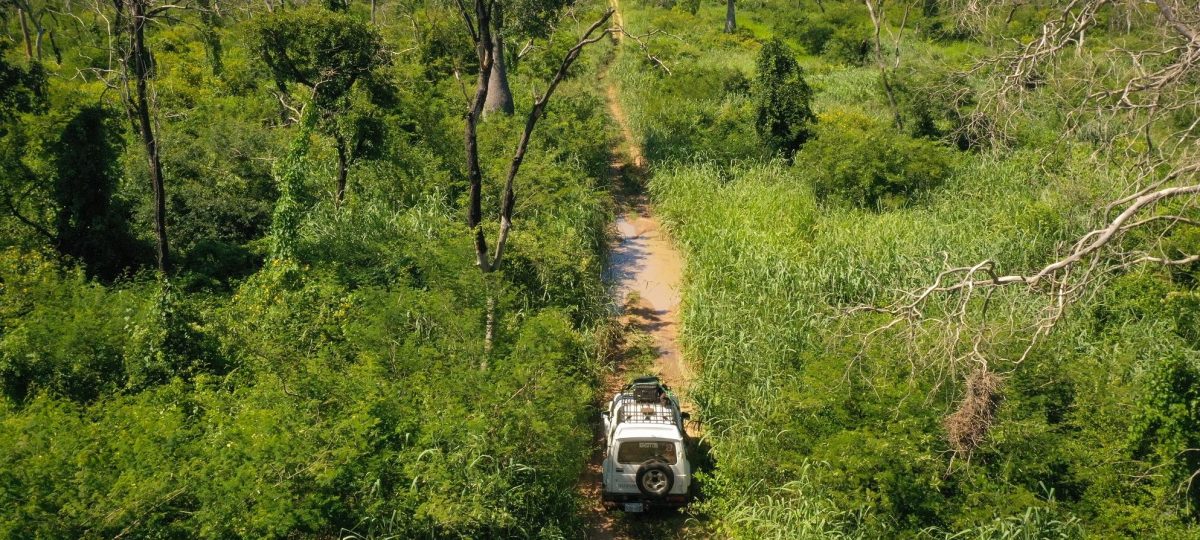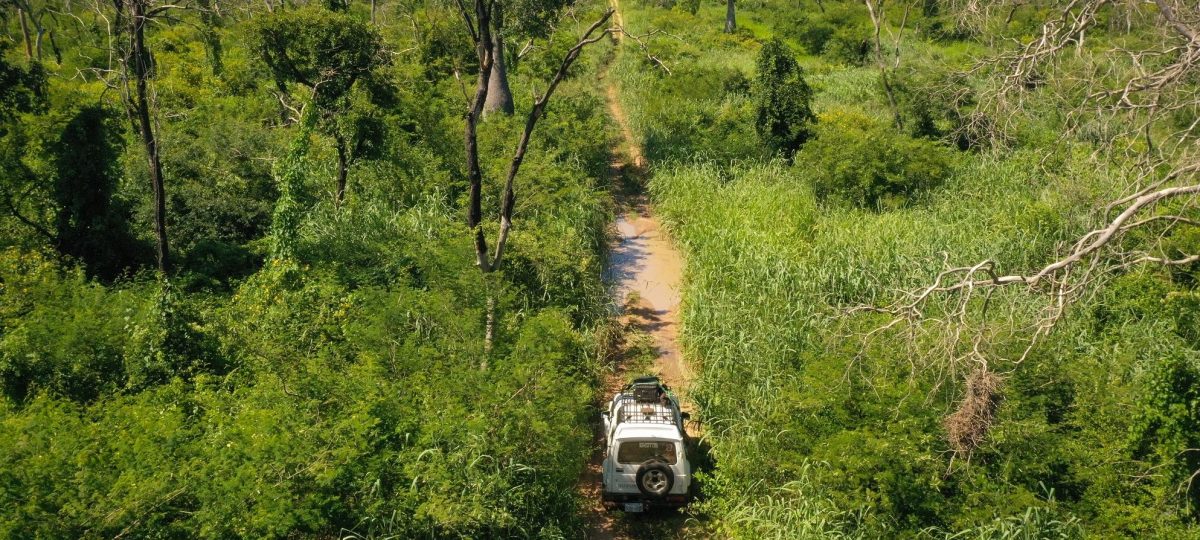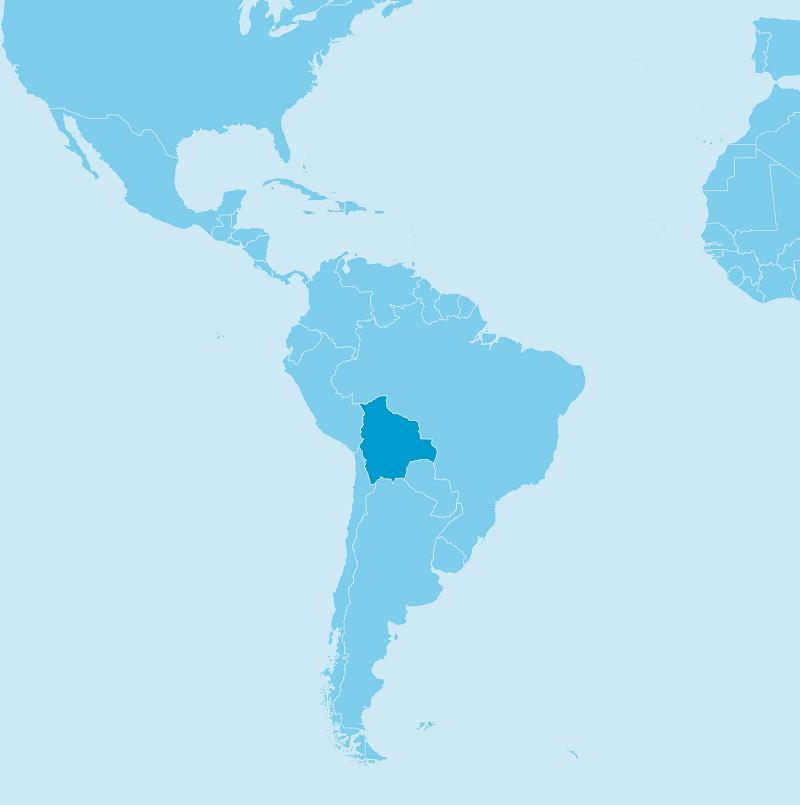Photos on this page: © NATIVA Bolivia
Bolivia’s Gran Chaco is home to unique species, such as the jaguar, and the territory of many Indigenous communities. History was made in 2019, when the Ñembi Guasu Indigenous Conservation Area was formally consolidated: the first Bolivian protected area formally declared by an Autonomous Indigenous government. In the current phase of the project, Fundación NATIVA Bolivia strengthens the conditions for the Ñembi Guasu to be well-managed in the long term, paving the way for it to be fully managed by the Charagua government. This work is jointly supported by a consortium of partners, namely, World Land Trust, Nature and Culture International, DOB Ecology and IUCN NL.
Ñembi Guasu, being a conservation area established based on a law of Indigenous autonomy that is part of the Bolivian constitution, is both a milestone in Bolivia and a global example.
Gran Chaco: largest forested area in South America
The Gran Chaco stretches across four countries, covering around 100 million hectares[1]Redes Chaco. Territorio. Link to web page.. After the Amazon, it is the largest forested area in South America. It mainly consists of semi-arid lowlands forests and wetlands. The Gran Chaco is connected with the Pantanal, the world’s largest tropical wetland area, together forming the Great Chaco-Pantanal Conservation Landscape. Deforestation, mainly driven by the expansion of agriculture, and the consequences of climate change, such as drought, are threatening this variety of ecosystems.
The Ñembi Guasu reserve is situated in the northern part of the Gran Chaco, in the Department of Santa Cruz and forms a central block of forest with a very low population density. The reserve play a vital role in the ecological and cultural connectivity, connecting two major Bolivian national protected areas (Kaa Iya and Otuquis) and ecosystems such as the Chaco, Chiquitania and Pantanal (Figure 1). It is also an important transboundary area that stretches to the Paraguayan Chaco. Although not fully studied yet, already 228 species of birds, 54 mammal species, 33 species of amphibians, 26 species of reptiles and 46 fish species have been identified in this area so far. These include emblematic species such as the Chacoan peccary, jaguar, puma, black howler monkey, tapir, and giant anteater.
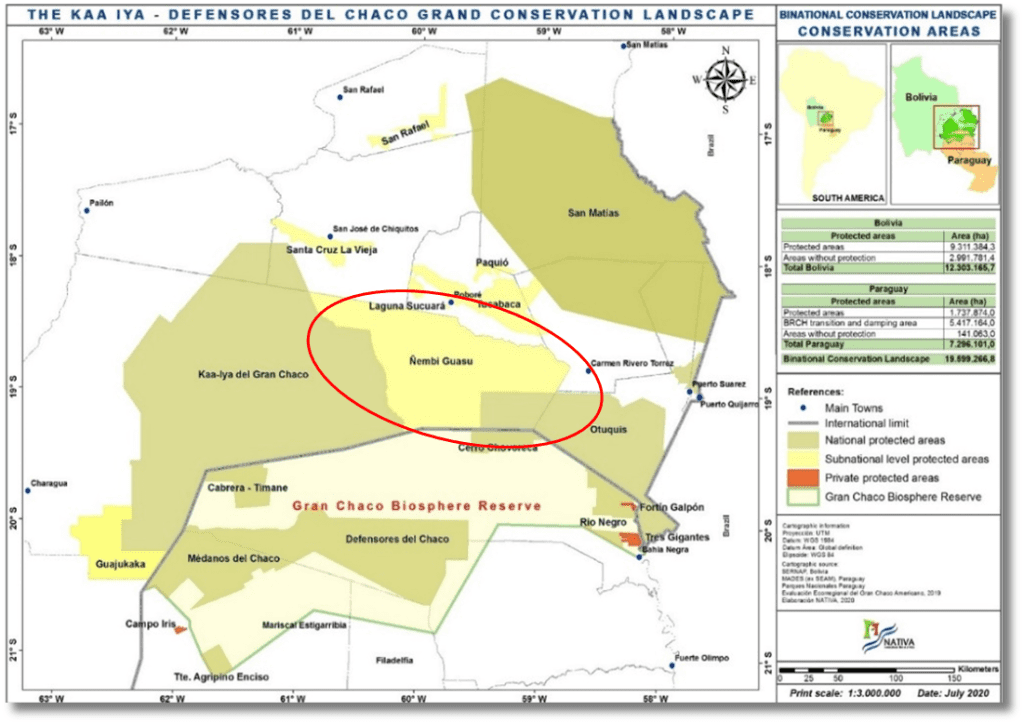
In an earlier initiative, part of our SRJS programme running from 2016 to 2020, IUCN NL assisted NATIVA and the Charagua government in the steps toward legally consolidating and delimiting the Ñembi Guasu Indigenous Conservation Area. Among the activities that were supported, was an ecological study that substantiated the law Number 033/2019 of the reserve.
Indigenous-led conservation in Ñembi Guasu
A diversity of Indigenous peoples have been living in and around Ñembi Guasu for many generations, including the Guaraní people. Ñembi Guasu, which means “great refuge” in Guarani, is also the territory of the Ayoreo tribe, of which some have chosen to live in isolation from others[2]Iniciativa Amotocodie. Investigaciones e informes. Link to web page.. Traditionally hunter-gatherers, their way of life of this small population is increasingly threatened by loss of territory.
The knowledge of Indigenous peoples is essential for sustainable landscape management in areas like the Amazon and Gran Chaco. In many parts of the world, however, decision-making processes affecting natural landscapes often ignore the interests and insights of Indigenous communities. Ñembi Guasu, being a conservation area established based on a law of Indigenous autonomy that is part of the Bolivian constitution, is both a milestone in Bolivia and a global example. It is therefore of great importance for IUCN NL to support the Indigenous management of the Ñembi Guasu Indigenous Conservation Area, through our local long-term partner NATIVA.
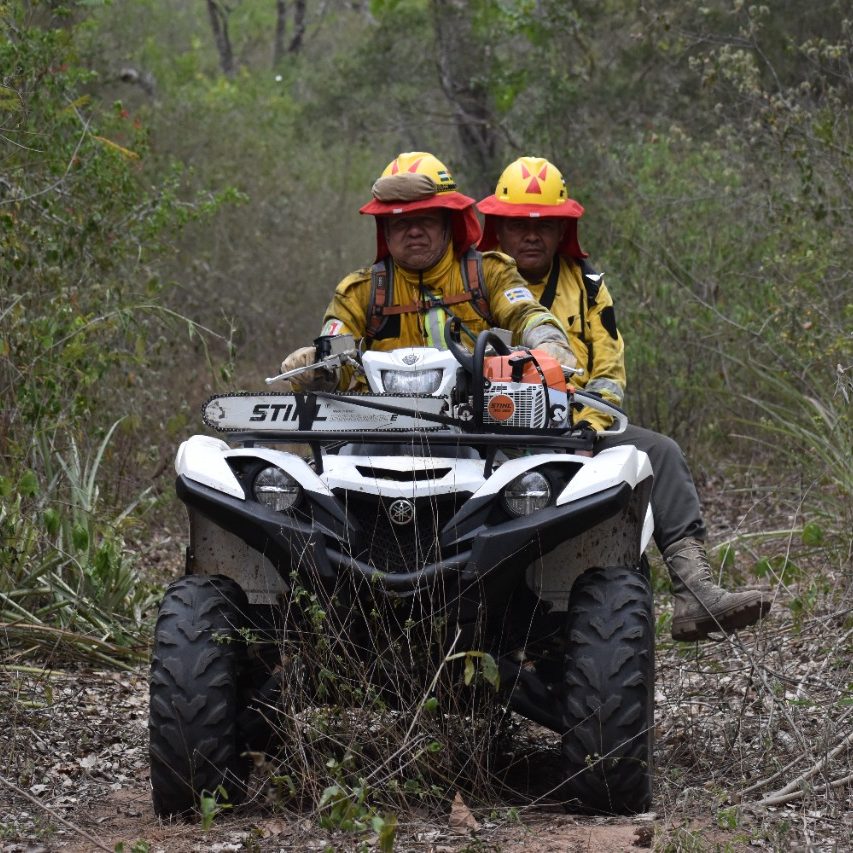

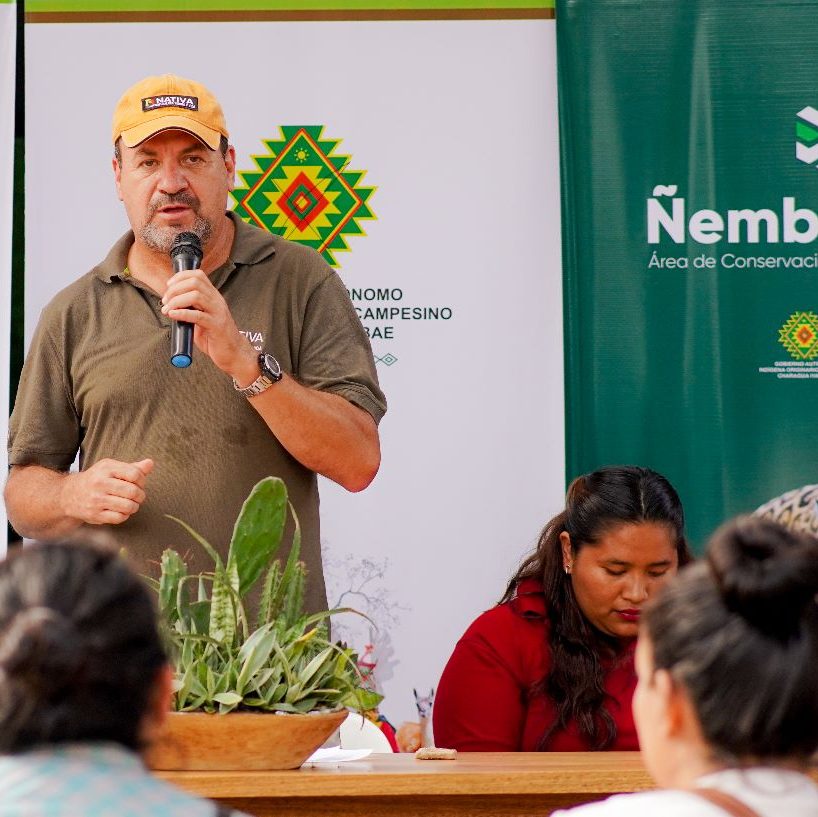

How do we support the Indigenous governance of Ñembi Guasu?
At the end of 2024 this project will have put in place several technical, financial, legal and political conditions for the Ñembi Guasu reserve to be well managed in the long term, based on local Indigenous values, while providing connectivity in the Chaco-Pantanal Conservation Landscape.
The project has three key objectives:
- an adequate management of the area with a strong local leadership, including a management plan;
- a financial mechanism for long-term management of Ñembi Guasu is in place;
- increased public and political support for Ñembi Guasu and Great Chaco-Pantanal Conservation Landscape.
Improving forest fire management
The Gran Chaco suffers from the consequences of climate change, such as long periods of drought. In 2019 and 2021 the Ñembi Guasu reserve was severely affected by enormous forest fires. Although forest fires are natural in the region, the scale and distribution of the fires were very unusual. Increasing fire prevention and improving forest fire management are therefore important goals that are being achieved by developing and implementing a public campaign, among other activities.
Ñembi Misi Operational Centre
The opening of the Ñembi Misi Operational Centre in May 2023 was a milestone for the management of the protected area. The operational centre was established by the Indigenous Autonomous government of Charagua with support from NATIVA and joint backing of World Land Trust, Nature and Culture International, DOB Ecology and IUCN NL.
Its main objective is to facilitate the operations by providing essential logistical support. The Ñembi Misi Operational Centre will enhance the efforts of park guards and Indigenous communities to conserve their ancestral lands and unique ecosystems. Additionally, it aims to contribute to the integrated management of the Great Chaco-Pantanal Conservation Landscape.
More information? Contact:


Index
| ↑1 | Redes Chaco. Territorio. Link to web page. |
|---|---|
| ↑2 | Iniciativa Amotocodie. Investigaciones e informes. Link to web page. |
